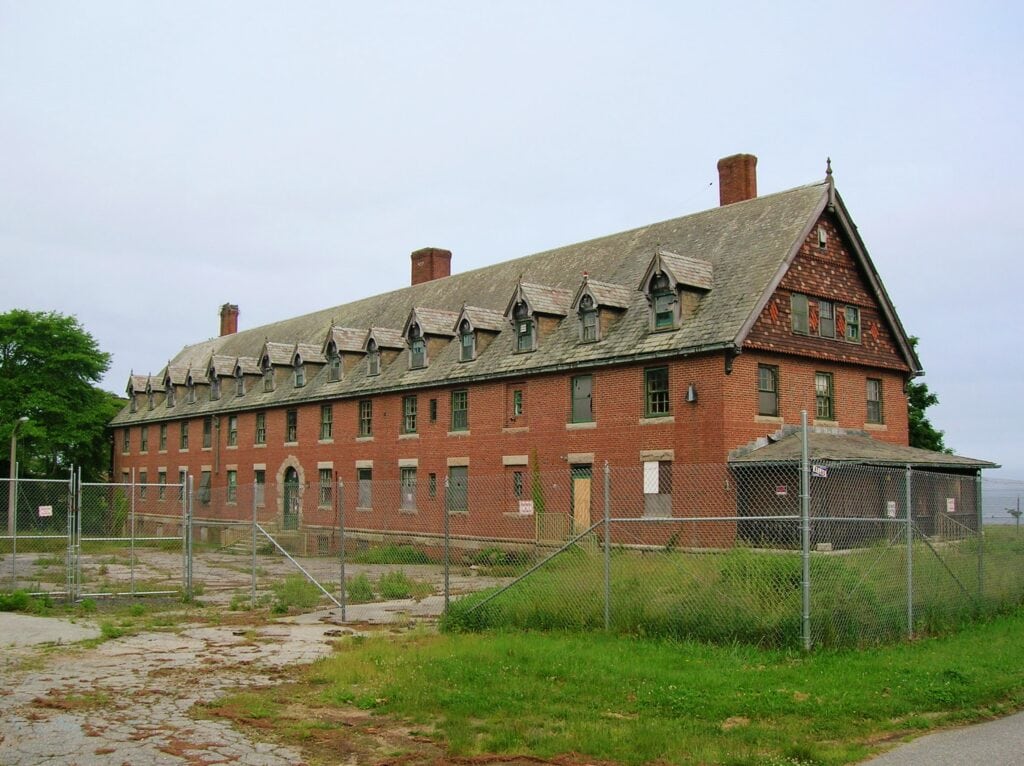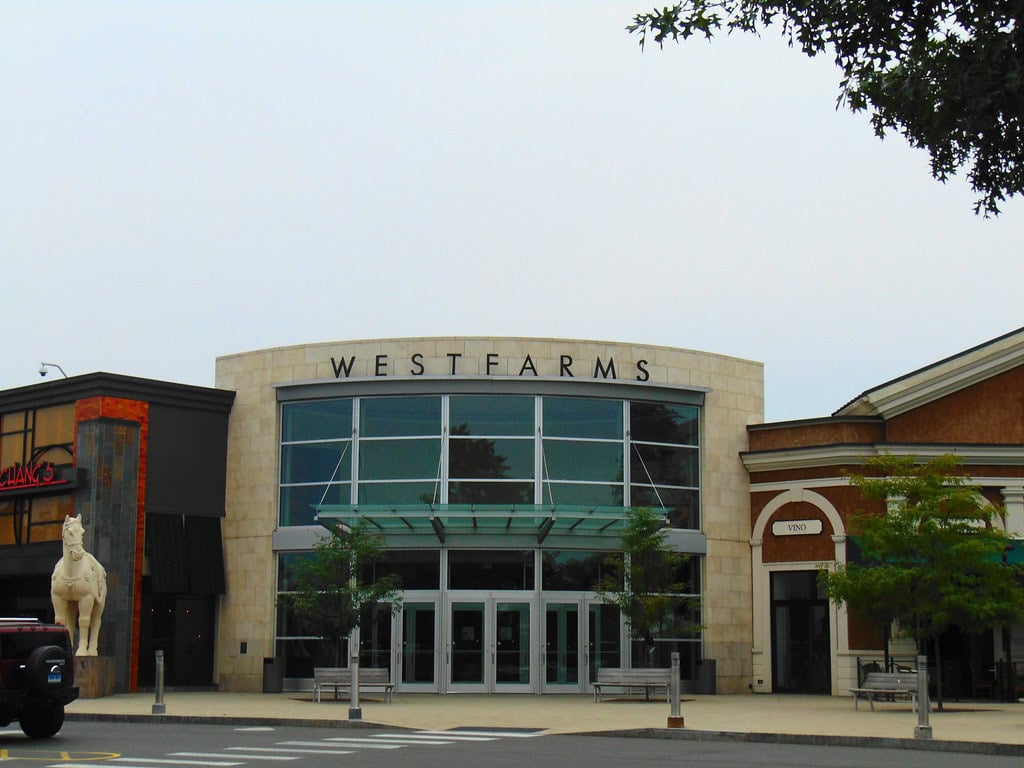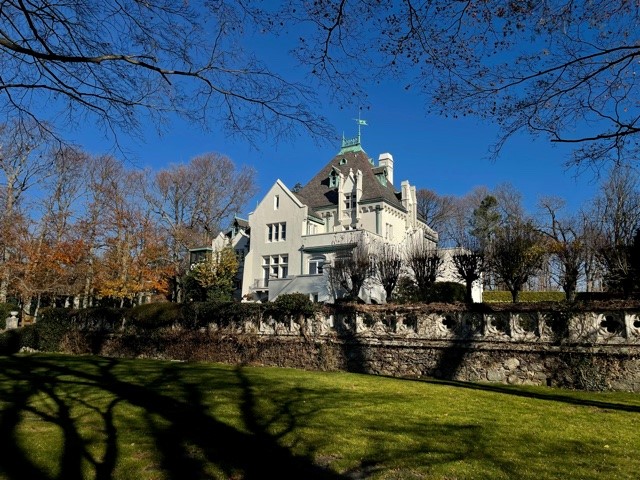The Sunlit Cure - A Medical Real Estate Gamble on the Shore
The salt air carried the scent of seaweed and iodine, drifting past rows of children bundled in wool blankets.
Their small bodies stretched across wooden recliners, angled just right to catch the full force of the midday sun.
Nurses, their white aprons stiff in the breeze, moved in silence. In the 1930s, this was cutting-edge medicine - heliotherapy, a treatment that relied on light and air to fight tuberculosis.
By the time Seaside Sanatorium opened in 1934, Connecticut had already tested the model.
The first Seaside facility was a repurposed hotel in Niantic, which had been operating since 1920 and filled up almost immediately.
Families from across the state - some from as far as Hartford and Bridgeport - sent their sick children in the hope that the sea and sun might succeed where medicine had failed.
The state needed to expand, but the McCook family, owners of the neighboring Crescent Beach property, refused to sell.
The legal battle went all the way to the Connecticut Supreme Court, but the state lost.
Officials turned to Waterford instead, purchasing a 28-acre stretch of land from the Smith-Grimes estate in 1930.
A few years later, they bought another parcel, pushing the total to 36 acres. The price: $125,000.
The investment had to look like progress, so the state called in Cass Gilbert. By then, he had designed the U.S. Supreme Court Building and the Woolworth Building - icons of power and permanence.
His vision for Seaside was a blend of Tudor Revival and Classical Revival architecture, designed to let sunlight flood in through south-facing terraces.
From the outside, the red-brick buildings resembled an elite boarding school more than a medical institution.
Inside, hospital beds lined breezy hallways and wide verandas opened toward the water.
For two decades, this was how the facility functioned. Patients - children, all under 14 - spent their days outside, swaddled against the cold, their faces turned to the light.
Even as medical advances introduced antibiotics, Seaside Sanatorium remained open, still following the old model.
But by the late 1940s, the numbers told a different story. Fewer patients were arriving. The waiting lists shrank. Tuberculosis was no longer the slow-moving disaster it had been when Seaside was built.
The property, once a medical breakthrough, now sat on the brink of obsolescence.
For Waterford, a town already defined by seasonal businesses and high turnover, Seaside Sanatorium had become a question mark.
A prime location - oceanfront, well-maintained, and state-funded - yet operating under a mission that no longer made financial sense.
By the end of the 1950s, state officials would have to decide: hold onto a property with a dwindling patient base or turn it into something else.
The Business of Care - A New Market for Seaside Sanatorium
The last tuberculosis patients left Seaside Sanatorium in the early 1950s.
Medicine had outpaced the need for sunlit recovery, and the state faced a decision: what to do with a sprawling 36-acre property on prime waterfront land.
The answer came in 1958 when the facility rebranded as Seaside Geriatric Hospital, a short-lived attempt to turn aging infrastructure into a new revenue stream.
The shift was practical. Connecticut's elderly population was growing, and hospitals were overcrowded.
The state needed long-term care facilities, and Seaside Sanatorium had space. But the location, so carefully chosen for tuberculosis treatment, wasn't ideal for geriatric care.
The salt air corroded medical equipment. The long, open-air corridors, designed for patients to bask in the sun, left the elderly vulnerable to wind and cold.
Three years later, the hospital shut down. Rather than sell, the state repurposed Seaside again.
By 1961, it became the Seaside Regional Center for the Mentally Retarded, part of a national push to relocate disabled individuals from large institutions to smaller, more specialized centers.
Seaside Sanatorium wasn't the only one - facilities like Southbury Training School had already set the precedent in Connecticut.
The state had a plan - turn aging hospitals into residential centers for people with developmental disabilities, a quick fix for overcrowded asylums.
On paper, it made sense. In practice, it unraveled. At Seaside Sanatorium, staff was stretched thin, treatments lagged behind, and reports of neglect piled up.
By the 1980s, advocacy groups were demanding change, forcing the state to confront what had been ignored for years.
Federal policies shifted, prioritizing community-based care over institutionalization.
Like many similar facilities, Seaside struggled to adapt. In 1996, after 35 years under its last name, the state shut it down for good.
The doors were locked, the patients relocated. The property - once a cutting-edge medical facility, then a hospital, then a home - was abandoned.

Vacant Land, Rising Value - The Fight Over Seaside's Future
For years, the Seaside Sanatorium sat untouched. The windows clouded with salt, the brick darkened with time.
Developers saw the opportunity - a rare stretch of undeveloped coastline 90 minutes from New York City in a state where waterfront real estate rarely changes hands.
The state still held the deed, but selling Seaside Sanatorium wasn't simple.
By the early 2000s, Connecticut was fielding offers - developers pitched oceanfront condos, boutique hotels, and even a high-end resort.
On paper, it was prime real estate. In reality, it was a bureaucratic tangle, and no deal came easy.
In 2010, the state struck a deal with developer Mark Steiner, granting him the rights to build a $200 million residential community on the site.
Plans included oceanfront homes, a boutique hotel, and a retail plaza - all designed to blend with the historic architecture.
The contract lasted four years. In 2014, Governor Dannel Malloy scrapped the deal, announcing that Seaside Sanatorium would instead become a state park.
Steiner sued for $20 million, claiming breach of contract. The lawsuit dragged on, but the state stood firm.
Demolition or Development - The Business of Preservation
By 2015, the state had rebranded its Seaside State Park - a name change, nothing more.
The land sat untouched, the buildings crumbling after two decades of storms and break-ins.
Windows shattered, walls buckled, and salt air gnawed at what was left. It wasn't a park. It wasn't anything.
Windows shattered, ceilings collapsed, paint peeled in long curls.
The state had cleared out the beds and medical equipment years ago, but remnants remained - rusted bed frames, a lone wheelchair in a corner, paperwork scattered across floors.
The Connecticut Department of Energy and Environmental Protection (DEEP) now controlled the property, tasked with deciding what to do with the land.
Preservationists pushed to restore Cass Gilbert's architecture, arguing that his designs had already been lost to neglect in too many places.
Private investors suggested repurposing the buildings into hotels or event spaces - anything that would justify the restoration costs.
Environmental groups wanted the structures gone altogether, clearing the way for a more natural landscape.
In 2023, the state authorized funding to remove the deteriorating buildings. Engineers conducted structural assessments, determining that many were beyond repair.
DEEP announced plans to demolish most of them, sparing only a few facades. The goal was to create a "passive park" - low-impact development, walking trails, picnic areas, and shoreline access.
No commercial ventures, no large-scale renovations. Public hearings followed.
Waterford residents and nearby towns split on Seaside's fate. Some saw a rare chance to expand Connecticut's coastal park system.
Others called it a wasted asset - prime oceanfront land left to rot instead of turning a profit.
By mid-2024, the fight had stalled. Demolition loomed, but resistance held firm. Once a hospital, then a failed investment, Seaside Sanatorium now sat between history and the wrecking ball.
From Hospital to Park - What Comes Next for Seaside Sanatorium?
As of 2025, the state had yet to break ground on Seaside's transformation. The property remained open to the public but only as an unofficial park.
Visitors walked the grounds, peering through broken windows, snapping photos of the ruins.
The air smelled of salt and damp wood. Signs warned against trespassing, but few obeyed.
In July 2024, Connecticut's Department of Energy and Environmental Protection (DEEP) presented a plan to erase what remained of the former sanatorium to a divided public.
The plan included walking trails, restored coastal habitats, and limited amenities - bathrooms, parking, and shaded picnic areas.
The buildings, except for a few remnants, would be removed.
What would remain were the views - Long Island Sound stretching out past the jagged rocks, the kind of scenery that had once convinced the state to build here in the first place.
With $7.1 million in federal funding, the state was ready to clear the structures and replace them with open land, walking trails, and shoreline access.
The project was labeled a "passive park" - a place for reflection, not preservation.
While Connecticut approved some money for demolition and site improvements, the full vision for Seaside State Park will take years to complete.
In the meantime, the property sat in limbo - too broken for real investment and too valuable to ignore.
For Waterford, Seaside had become both an opportunity and a burden. The land had changed hands, changed purposes, but had never fully settled into anything permanent.
Now, with its final chapter still unwritten, it stands as a place between what it had been and what it might become.









